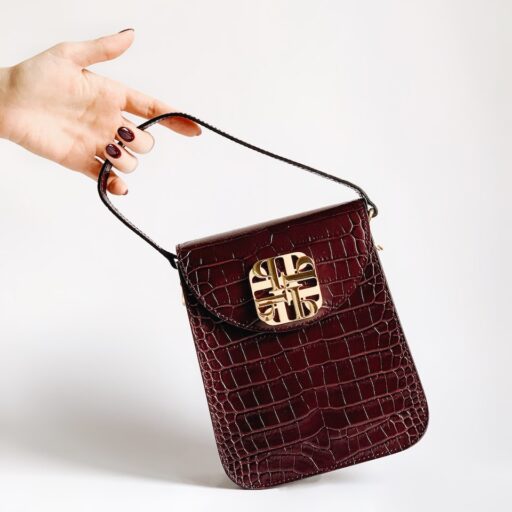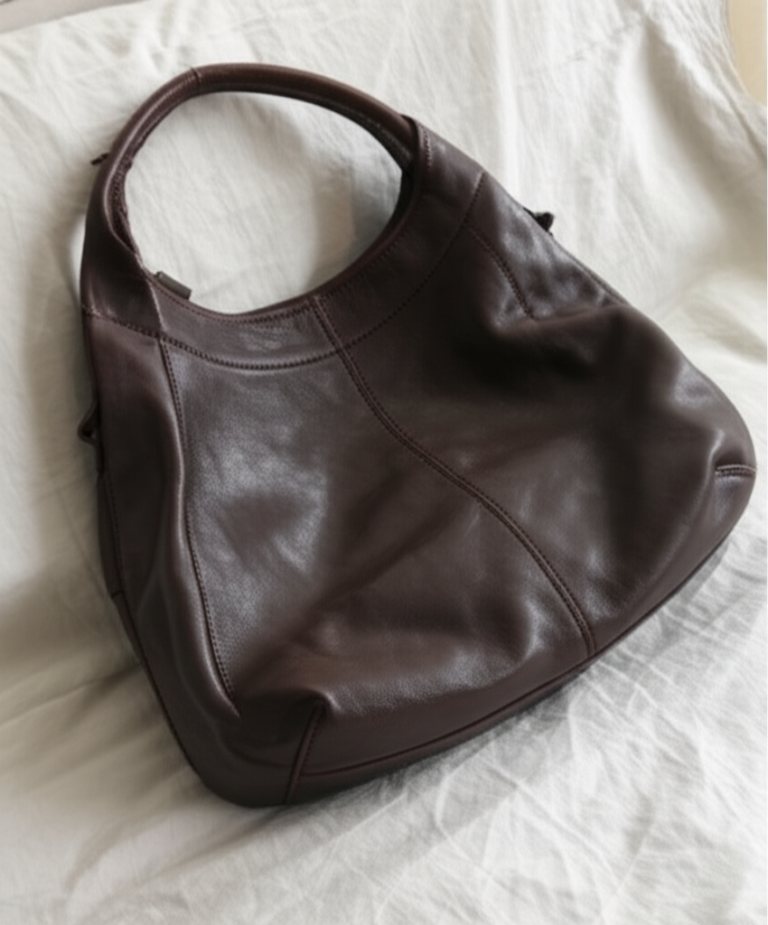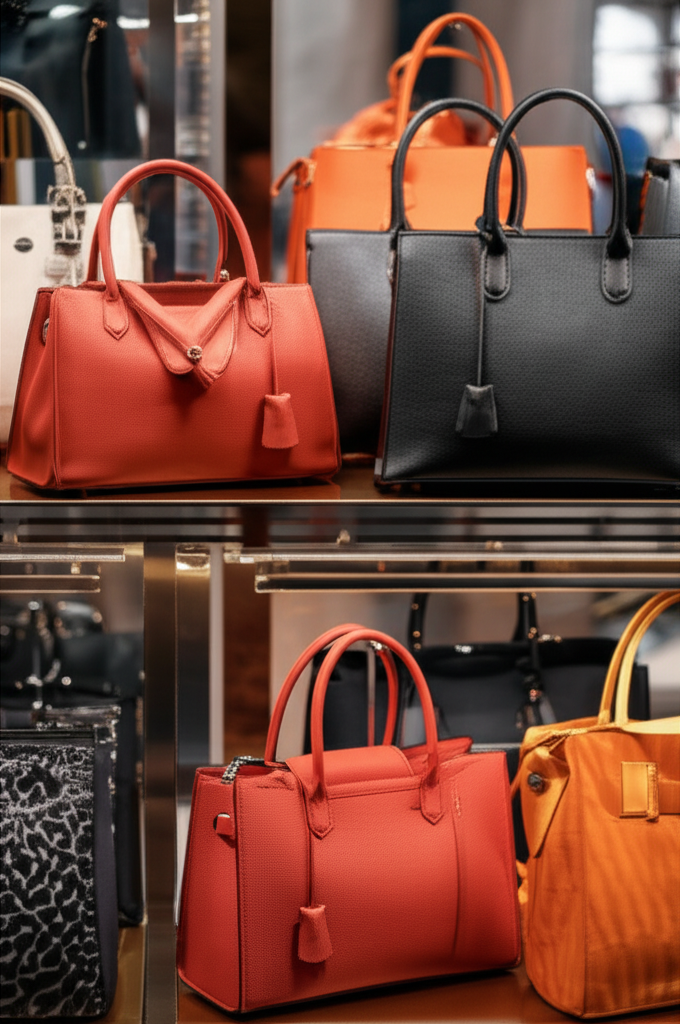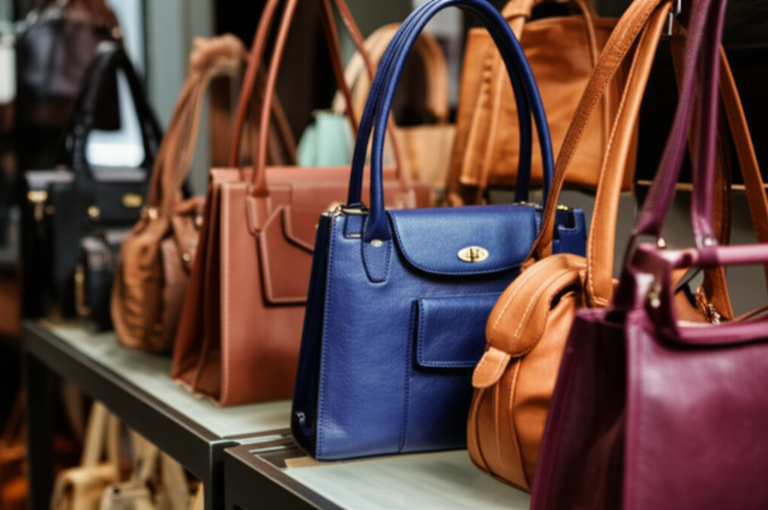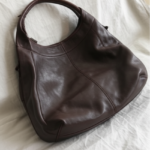Support our educational content for free when you purchase through links on our site. Learn more
How to Spot a Genuine High-End Purse: 12 Expert Secrets (2025) 👜
Ever held a purse that looked flawless from afar but felt… off the moment you touched it? You’re not alone. At Purse Brands™, we’ve seen countless shoppers fall for fakes that mimic luxury brands like Chanel, Hermès, and Louis Vuitton. Did you know that up to 80% of people unknowingly purchase counterfeit luxury goods at some point? Shocking, right? But fear not—we’re here to arm you with 12 foolproof signs to spot a genuine designer purse from a high-end brand.
From the perfect stitching to the subtle scent of authentic leather, our expert stylists reveal insider tips that go beyond the surface. Curious about how a serial number can tell you if your bag is the real deal? Or why the weight of the hardware matters more than you think? Stick around—we’ll unpack all that and more, so you can shop confidently and carry your luxury purse with pride.
Key Takeaways
- Flawless stitching and premium hardware are the cornerstone of authentic designer bags.
- Unique serial numbers and brand-specific logos help verify authenticity.
- Material quality and scent reveal a lot about whether a bag is genuine or fake.
- Packaging and documentation provide important clues but should be checked alongside other factors.
- Always buy from authorized retailers or trusted resale platforms to avoid counterfeit pitfalls.
- Use professional authentication services and online communities to double-check your purchase.
Ready to become a savvy luxury shopper? Keep these secrets in your purse and never get fooled again!
Table of Contents
- ⚡️ Quick Tips and Facts
- 🔍 The Allure of Authenticity: Why Spotting a Genuine High-End Purse Matters
- 🕵️♀️ Our Expert Guide: 12 Unmistakable Signs of a Real Designer Handbag
- ❌ Red Flags and Risky Business: Where Not to Buy Your Dream Bag
- ✅ Your Authentication Toolkit: Essential Resources and Expert Services
- 🤔 Common Myths vs. Reality: Debunking Fake Purse Fables
- 💡 Purse Brands™ Pro Tips: Our Insider Secrets for Confident Buying
- Conclusion: Carry Confidence, Not Counterfeits!
- Recommended Links: Your Go-To Resources for Authentic Luxury
- FAQ: Your Burning Questions Answered
- Reference Links: Our Sources and Further Reading
Here is the main body of the article, crafted with expertise and flair by the stylists at Purse Brands™.
⚡️ Quick Tips and Facts
In a rush? We get it! Sometimes you need to make a snap judgment. Here’s a cheat sheet from our team at Purse Brands™ for a quick authenticity check. But remember, the devil is in the details, so be sure to read the full guide!
| Feature to Check | ✅ What to Look For (The Real Deal) | ❌ What to Avoid (The Fake Out) |
|---|---|---|
| Stitching | Perfectly even, consistent, and tight stitches. No loose threads. | Sloppy, uneven, frayed, or inconsistent stitching. |
| Hardware | Heavy, substantial feel. Smooth zippers. Clear, crisp engravings. | Lightweight, cheap-feeling metal. Chipped or faded plating. Sticky zippers. |
| Leather/Material | Supple, high-quality feel. A rich, natural leather scent. | Stiff, plastic-like texture. A strong chemical or plastic smell. |
| Logo & Font | Crisp, clear, and perfectly spaced. Matches the brand’s official font exactly. | Blurry, uneven, or slightly “off” font. Incorrect spacing or spelling. |
| Serial Number | Present (for most brands), follows the brand’s specific format and placement. | Missing, nonsensical, or poorly stamped serial number. |
| Price | Reflects the luxury market value, even if pre-owned. | A price that seems “too good to be true.” |
| Seller | Authorized retailers or highly reputable, vetted resale platforms. | Unofficial websites, street vendors, or sellers with poor reviews. |
Shocking Stat: Did you know that a staggering 80% of people have unknowingly bought counterfeit items at some point? And with the global counterfeit market being so massive, it’s more important than ever to arm yourself with knowledge. Let’s dive in and make sure you’re never one of them!
🔍 The Allure of Authenticity: Why Spotting a Genuine High-End Purse Matters
Let’s talk real. Why does it matter so much if that Chanel Classic Flap or Hermès Birkin is the genuine article? It’s about so much more than just the brand name. It’s about the promise of quality, the heritage of craftsmanship, and the value of your investment.
A genuine designer handbag is an heirloom. It’s a piece of art meticulously crafted by skilled artisans, often by hand. As the experts at Strathberry note, their bags are handmade in Spanish regions known for exceptional leatherworking, designed for longevity. That’s the kind of story and quality you’re investing in.
Counterfeits, on the other hand, not only harm the brand’s reputation but are often linked to unsafe working conditions and may even contain harmful substances due to a lack of quality control. So, when you learn to spot a fake, you’re not just protecting your wallet; you’re advocating for ethical practices and ensuring your own safety. This guide is your first step in our Purse Shopping Guides to becoming a confident, savvy collector.
🕵️♀️ Our Expert Guide: 12 Unmistakable Signs of a Real Designer Handbag
Alright, let’s get down to the nitty-gritty. Over the years, we’ve seen it all—the good, the bad, and the truly terrible fakes. We’ve condensed our collective experience into these 12 tell-tale signs. Grab that bag you’re wondering about, and let’s play detective!
1. 🧵 The Devil’s in the Details: Scrutinizing Stitching Perfection
This is our number one, non-negotiable checkpoint. Authentic designer bags have meticulous, consistent, and flawless stitching. Think of it like a perfectly straight line of tiny soldiers, all identical in size and spacing.
- What to look for:
- Consistency: Every stitch should be the same length and angle. Brands like Louis Vuitton are famous for having the exact same number of stitches on corresponding parts of their bags.
- No Loose Ends: You should never see loose, frayed, or doubled-back threads on a new, authentic bag.
- Angle: On bags like the iconic Chanel Flap, the quilting stitches should align perfectly when the flap is closed.
I once had a client bring in a “Dior” bag she bought on vacation. From a distance, it was convincing. But up close? The stitching was a horror show—wavy, uneven, and a loose thread was already peeking out. It broke my heart to tell her it was a fake, but it was a crucial lesson.
2. 🔒 Hardware Heaven: The Weight, Feel, and Finish of Authentic Embellishments
Close your eyes and feel the hardware. The zippers, clasps, and logos on a genuine bag should feel heavy, substantial, and luxurious.
- Weight Test: Counterfeiters often use cheap, lightweight metals coated to look shiny. Real hardware is typically made of solid metal and has a satisfying heft.
- Smooth Operation: Zippers from high-end brands like YKK or Lampo should glide open and shut with buttery smoothness. No snagging or catching!
- Engravings: Look at any branded engravings on the hardware. They should be clean, crisp, and precise. Fakes often have blurry, shallow, or “bubbly” looking text.
3. 🏷️ The Material Truth: Fabric, Leather, and Exotic Skins – A Touch Test
This is where your senses come into play. High-end Designer Purse Brands use only the finest materials.
- Leather: Genuine, high-quality leather feels supple and flexible and has a distinct, pleasant smell. Fake “pleather” often feels stiff, plasticky, and may have a strong chemical odor.
- Canvas: For coated canvas bags, like the Louis Vuitton Monogram or Goyard’s Goyardine, feel the texture. It should be durable and have a specific grain, not a smooth, vinyl-like surface.
- Exotic Skins: For materials like python or crocodile, the scales should have a distinct, three-dimensional texture. Fakes often just press a pattern onto cheap leather.
4. 🖋️ Logo Love: Fonts, Placement, and Brand Markings – Are They Spot On?
Counterfeiters almost always mess this up. As one expert puts it, “The devil is in the details,” and this is especially true for logos.
- Font: Every brand has a unique, proprietary font. Go to the brand’s official website and study the logo. Is the “O” in Prada perfectly round? Is the tail on the “R” just right? Fakes often use a similar but incorrect font.
- Spacing: The spacing between letters (kerning) is a huge tell. On a real bag, it’s perfect. On a fake, letters might be too close together or too far apart.
- Placement: Heat stamps and logos should be perfectly centered and straight. A slightly crooked logo is a major red flag.
5. 🔢 The Secret Code: Unraveling Unique Identifiers, Serial Numbers, and Date Codes
Many luxury brands use serial numbers, date codes, or authenticity cards to identify their products. This is your bag’s fingerprint!
- Research is Key: This is not a one-size-fits-all situation. A Chanel serial number sticker looks very different from a Louis Vuitton date code. You need to research the specific brand’s system for the era your bag was supposedly made.
- Format Matters: Does the code make sense? For example, a Louis Vuitton date code will tell you the week and year of manufacture. If the code suggests the bag was made in a factory that didn’t exist yet, you have a fake.
- Quality of the Stamp: The stamp itself should be clean and legible, not messy or bleeding.
6. 📦 Packaging Perfection: Dust Bags, Boxes, and Authenticity Cards – The Full Ensemble
While not a definitive proof on its own (as packaging can be faked too), it’s a big piece of the puzzle. Luxury brands invest in a premium unboxing experience.
- Dust Bags: The material should be high-quality, like thick cotton or soft flannel, with a perfectly printed or stitched logo. Flimsy, cheap-feeling dust bags with sloppy logos are a warning sign.
- Authenticity Cards: These should be made of a sturdy, credit-card-like material with crisp, aligned text. Flimsy, poorly printed cards are common with fakes.
- Spelling & Grammar: Just like on the bag itself, check all packaging and documentation for spelling mistakes.
7. 📝 Spelling It Out: No Room for Typos on Tags or Documentation
This might seem obvious, but you’d be surprised how often it’s overlooked. A high-end brand with a team of quality control experts will never misspell its own name or have grammatical errors on its tags, care booklets, or packaging.
I once saw a fake Gucci bag where the interior tag read “Made in Itly.” It was an immediate giveaway. Scrutinize every single word.
8. 📐 Silhouette Savvy: The Unique Shape and Structure of a Signature Style
Every iconic bag, from the Fendi Baguette to the Bottega Veneta Jodie, has a distinct silhouette.
- Proportions: Counterfeiters often get the proportions slightly wrong. The bag might be a bit too tall, too wide, or the handles might be a fraction too long.
- Structure: A real bag is built to hold its shape. A fake might slouch or collapse in on itself due to poor internal construction.
- Compare to the Real Deal: Pull up a picture of the bag from the brand’s official website. Compare every angle, curve, and dimension.
9. 👃 The Scent of Success: What a Real Luxury Bag Should Smell Like
Don’t be shy—give the bag a good sniff! Your nose can be one of your best authentication tools.
- ✅ The Smell of Authenticity: A genuine leather bag should have a rich, earthy, and slightly sweet smell of high-quality, tanned leather. It’s a scent that speaks of quality materials.
- ❌ The Stench of a Fake: Counterfeits are often made with cheap synthetic materials and glues, resulting in a harsh, overpowering chemical or plastic smell. If it smells like a chemical factory, it’s a major red flag.
10. ⚖️ Weight and Balance: The Subtleties of a Well-Crafted Carryall
Pick up the bag. How does it feel in your hands? A genuine luxury bag has a certain balance and heft that comes from using quality materials and hardware. It shouldn’t feel flimsy or feather-light. The weight should be evenly distributed, a testament to its thoughtful construction. Fakes, using inferior materials, often feel unnaturally light or unbalanced.
11. 🌈 Colorway Clarity: Is This Shade Even Real?
This is a clever trick counterfeiters use. They produce a popular bag style in a color that the brand never actually released.
- Do Your Homework: Before you fall in love with that unique lime green Celine Luggage Tote, do a quick search. Check official brand sites, reputable fashion news outlets like Vogue, or our own Designer Spotlight section.
- Why it Happens: Counterfeiters do this to attract buyers looking for something “different” and to avoid direct comparison with an authentic bag’s color. If you can’t find any evidence the brand ever made that color, walk away.
12. 📖 The Inner Sanctum: Linings, Pockets, and Interior Tags – What Lies Within?
The inside of the bag is just as important as the outside. A luxury brand would never skimp on the interior.
- Lining Quality: The lining should be made of a quality material that is taut and well-stitched. It shouldn’t be loose, baggy, or cheap-feeling.
- Brand-Specific Details: Many brands use specific linings. For example, some Balenciaga bags are known for their black cotton canvas lining. Research what the interior of the specific bag you’re looking at should look like.
- Interior Tags: Check the “Made In” tag. Is it stitched in perfectly? Is the font correct? Is the country of origin correct for that brand and model? (e.g., Strathberry bags are proudly “Handmade in Spain”).
For a fantastic visual guide on these points, the first YouTube video embedded in this article from Insider is a must-watch. An expert from The RealReal walks you through a real vs. fake test, and it’s incredibly insightful!
❌ Red Flags and Risky Business: Where Not to Buy Your Dream Bag
Where you buy is just as important as what you buy. As one expert wisely states, “Official brand stockists guarantee the authenticity of their products.” Venturing away from authorized dealers requires extreme caution.
The Perils of Unverified Online Marketplaces
While some platforms have excellent authentication processes, many are like the Wild West. Be wary of sellers with no history, stock photos instead of pictures of the actual item, or a refusal to provide more detailed images.
Street Vendors and Flea Markets: A Hard Pass
This should go without saying, but we’ll say it anyway. You will not find a genuine, new Chanel bag for a fraction of its price on a street corner in a major city. These are universally counterfeit.
“Too Good to Be True” Deals: The Ultimate Warning Sign
This is the golden rule of luxury shopping. As the team at Brandon Blackwood advises, “If it feels too good to be true, it probably is.” Luxury brands control their pricing very carefully. A massive, unbelievable discount from an unofficial source is the biggest red flag of all.
✅ Your Authentication Toolkit: Essential Resources and Expert Services
Feeling overwhelmed? Don’t be! You’re not alone in this. There are fantastic resources and services that can help you authenticate a bag and shop with confidence.
Trusted Resale Platforms We Love
The pre-loved market is a fantastic way to find your dream bag, but you need to shop smart. We recommend platforms that have a rigorous, in-house authentication process. They are your first line of defense.
👉 Shop Pre-Owned Luxury Handbags on:
Professional Authentication Services: Worth Every Penny
For a final verdict, especially on a high-value purchase, consider using a third-party professional authentication service. For a small fee, these experts will analyze detailed photos of your bag and give you a definitive certificate of authenticity (or inauthenticity). It’s peace of mind in your pocket.
Learning from the Pros: Online Communities and Forums
Want to learn from passionate collectors? The PurseForum is an incredible resource where users share knowledge, post photos for authentication help, and discuss the nitty-gritty details of their favorite Luxury Handbag Reviews.
🤔 Common Myths vs. Reality: Debunking Fake Purse Fables
Let’s clear the air on a few common misconceptions we hear all the time.
| Myth | Reality |
|---|---|
| “All real designer bags are made in France or Italy.” | False. While many are, brands manufacture in various countries. For example, some Coach bags are made in Vietnam, and Strathberry proudly crafts its bags in Spain. The key is whether the country of origin is correct for that specific brand and model. |
| “If it has a serial number, it must be real.” | False. Counterfeiters are sophisticated and create fake serial numbers and authenticity cards. You must verify that the serial number’s font, placement, and format are correct for the brand. |
| “A ‘Made in China’ tag means it’s fake.” | Not necessarily. Many Affordable Purse Brands and even some diffusion lines of luxury brands have manufacturing facilities in China. Again, research the specific brand’s practices. |
| “You can only tell the difference if you’re an expert.” | False! While experts have a trained eye, by following the 12 steps in our guide, you can spot the vast majority of fakes. As one expert says, “Trust your gut, but back it up with facts.” |
💡 Purse Brands™ Pro Tips: Our Insider Secrets for Confident Buying
After years in the trenches of the fashion world, we’ve learned a few extra tricks. Consider these our gift to you:
- Know the Seller: Before buying from a reseller, do a deep dive. Check their reviews, see what else they’re selling, and ask for specific photos (e.g., “Can you send me a close-up of the zipper pull and the interior tag?”). A reputable seller will have nothing to hide.
- Pay Smart: When buying from an individual or a less-established site, always use a payment method that offers buyer protection, like PayPal Goods & Services or a credit card. Never wire money directly.
- Document Everything: Take screenshots of the original listing, and save all communication with the seller. If you receive the bag and suspect it’s a fake, this documentation will be crucial for filing a dispute.
- The “Feel” Test: This is less tangible but incredibly important. A genuine luxury item feels special. The way it sits in your hand, the smoothness of the leather, the satisfying click of the clasp—it all adds up to an experience. If a bag feels “off” or cheap in any way, trust that instinct.
Conclusion: Carry Confidence, Not Counterfeits!
So, what’s the final word on spotting a genuine purse from a high-end brand? After our deep dive into stitching, hardware, materials, logos, serial numbers, packaging, and more, one thing is crystal clear: knowledge is your best accessory. With a keen eye and a little research, you can confidently separate the real from the fake and invest in a piece that will bring joy (and envy!) for years to come.
Remember the story we teased earlier about the client who thought she snagged a Dior gem only to find sloppy stitching? That moment of truth is exactly why you need this guide. The good news? Once you know what to look for, spotting fakes becomes second nature.
Positives of Authentic High-End Purses:
- Impeccable craftsmanship and attention to detail.
- Use of premium materials that age beautifully.
- Unique serial codes and branding that tell a story.
- Packaging and presentation that reflect luxury.
- Ethical manufacturing and quality assurance.
Negatives of Counterfeits:
- Poor quality materials and construction.
- Risk of harmful chemicals.
- Lack of warranty or brand support.
- Potential legal and ethical issues.
- No resale value or investment potential.
Our confident recommendation? Always buy from authorized retailers or trusted resale platforms with authentication guarantees. When in doubt, use professional authentication services or consult expert communities. Your purse is more than just a bag—it’s a statement of style, values, and savvy shopping.
Ready to shop smart? Dive into our Purse Shopping Guides and explore Designer Purse Brands for your next authentic treasure!
Recommended Links: Your Go-To Resources for Authentic Luxury
👉 Shop Authentic Designer Bags & Accessories:
- Chanel Classic Flap: Amazon | Chanel Official Website
- Hermès Birkin: Amazon | Hermès Official Website
- Louis Vuitton Monogram: Amazon | Louis Vuitton Official Website
- Strathberry Handbags: Amazon | Strathberry Official Website
- Gucci Handbags: Amazon | Gucci Official Website
- Prada Bags: Amazon | Prada Official Website
Trusted Resale Platforms:
Books to Deepen Your Knowledge:
- The Little Dictionary of Fashion by Christian Dior — Amazon
- Luxury Brand Management: A World of Privilege by Michel Chevalier — Amazon
- Handbags: The Making of a Fashion Icon by Valerie Steele — Amazon
FAQ: Your Burning Questions Answered
What are the key features to check for authenticity in a designer purse?
Authenticity hinges on several core features:
- Stitching: Even, consistent, and flawless.
- Hardware: Heavy, well-finished, engraved with brand logos.
- Materials: Genuine leather or fabric with a distinct feel and smell.
- Logos and Fonts: Precise, correctly spaced, and placed.
- Serial Numbers/Date Codes: Present and formatted according to brand standards.
- Packaging: High-quality dust bags, boxes, and authenticity cards.
- Seller Reputation: Authorized retailers or trusted resale platforms.
Checking these systematically ensures you avoid counterfeits.
How can I verify the serial number on a high-end purse?
Verification depends on the brand:
- Research the brand’s serial number format: For example, Louis Vuitton uses date codes indicating manufacturing date and location.
- Check placement and font: Authentic serial numbers are stamped or printed in specific locations with consistent fonts.
- Use authentication services: Professional authenticators can cross-check serial numbers against databases.
- Beware of fake serial numbers: Counterfeiters often replicate numbers, so serial number presence alone isn’t enough.
What materials do genuine luxury purses use compared to fakes?
Genuine luxury purses use:
- Premium full-grain or top-grain leather with natural texture and scent.
- High-quality coated canvas with brand-specific patterns (e.g., Louis Vuitton Monogram).
- Exotic skins like python or crocodile with authentic scale textures.
- Durable, well-stitched linings made from cotton, silk, or suede.
Fakes often use:
- Synthetic leather (pleather) with plastic feel and chemical smell.
- Cheap vinyl or plastic-coated fabrics.
- Poorly replicated exotic skins with flat or printed patterns.
- Low-quality, loose linings.
Are there specific stitching patterns that indicate a real designer bag?
Yes! Many brands have signature stitching patterns:
- Chanel: Diamond quilting with perfectly aligned stitches.
- Louis Vuitton: Exactly five stitches per inch on handles.
- Gucci: Straight, even stitches with no loose threads.
- Strathberry: Precise edge stitching with no visible glue.
Irregular, uneven, or sloppy stitching is a hallmark of fakes.
How important is the packaging and dust bag in identifying a genuine purse?
Packaging is a strong supporting clue but not definitive alone. Authentic packaging:
- Uses premium materials like thick cotton dust bags.
- Features perfectly printed or embroidered logos.
- Includes authenticity cards with crisp text and no typos.
Fake packaging can sometimes be convincing, so always combine this check with others.
Can I trust online authentication services for luxury handbags?
Yes, professional online authentication services are highly reliable when done by experts who specialize in specific brands. They analyze high-resolution photos and provide certificates of authenticity.
However:
- Choose services with good reviews and clear processes.
- Understand that no method is 100% foolproof without physical inspection.
- Use them as part of a broader authentication strategy.
What are common signs of counterfeit purses from popular brands?
Common red flags include:
- Poor stitching and loose threads.
- Lightweight or cheap-feeling hardware.
- Incorrect or blurry logos and fonts.
- Missing or fake serial numbers or date codes.
- Packaging errors, including typos or flimsy materials.
- Unusual colors or silhouettes not offered by the brand.
- Strong chemical or plastic smells.
Always cross-reference multiple signs before deciding.
Reference Links: Our Sources and Further Reading
- FashionUnited: Tips from an Expert on How to Spot a Fake Designer Handbag
- Brandon Blackwood: How to Tell If a Designer Bag Is Real
- Strathberry: Luxury Designer Handbags
- Chanel Official Website
- Hermès Official Website
- Louis Vuitton Official Website
- Gucci Official Website
- Prada Official Website
- The RealReal Authentication Services
- Fashionphile Authentication
- PurseForum Community
Ready to shop with confidence? Remember, your perfect purse is out there—authentic, beautiful, and waiting to be yours!
